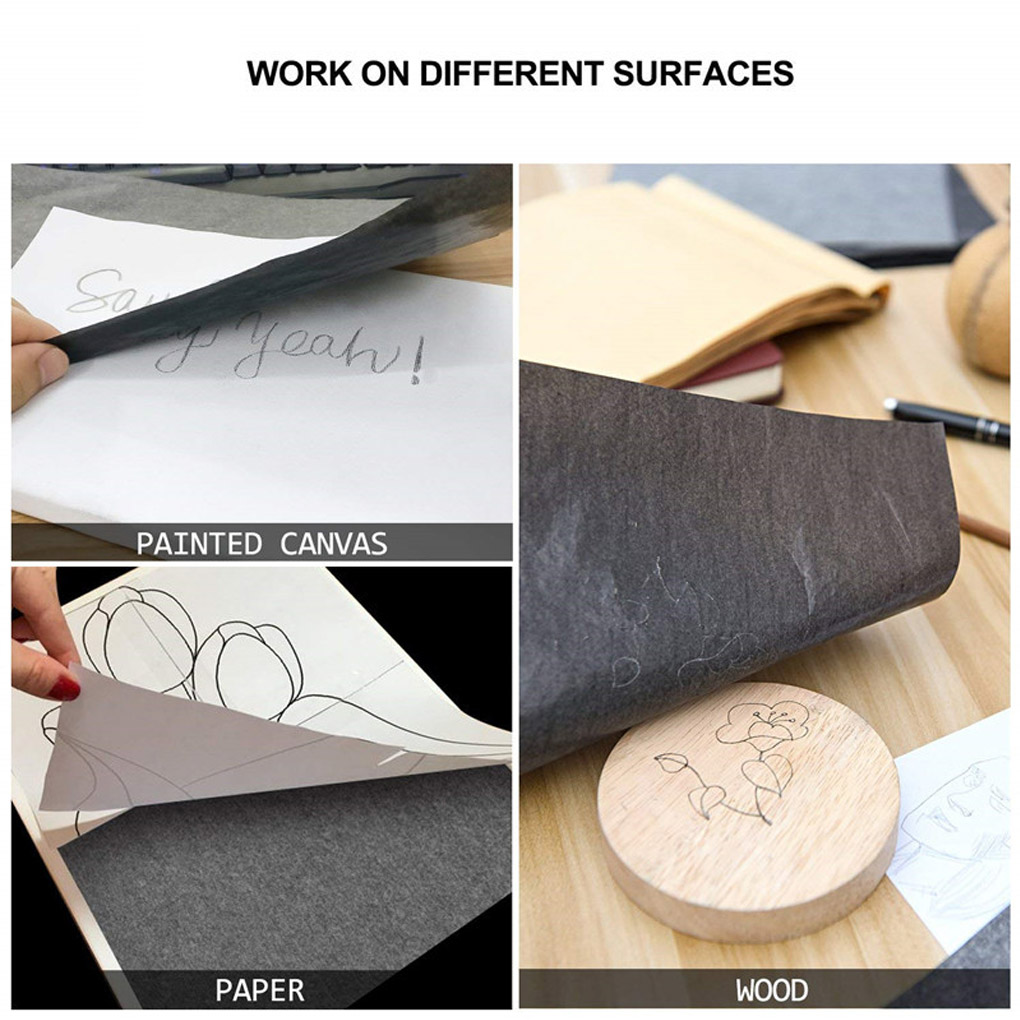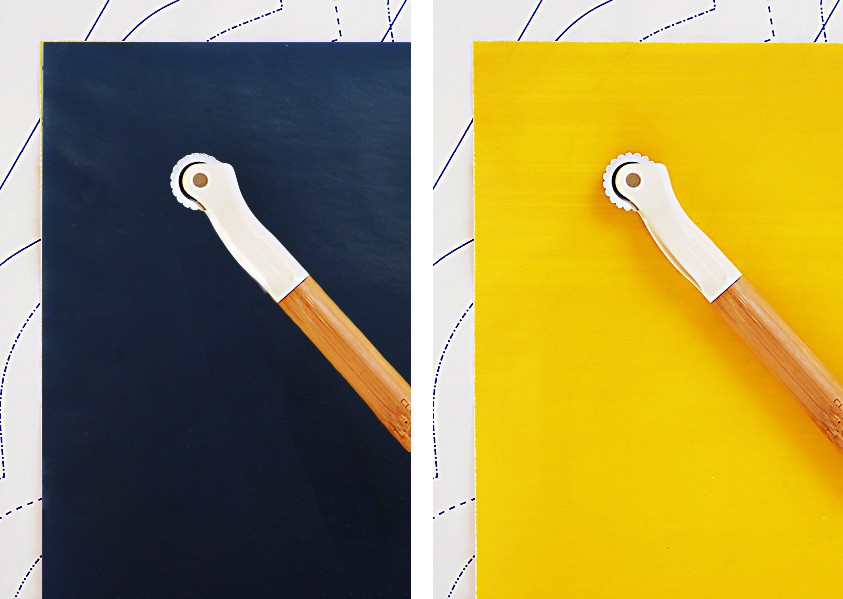What are the practical applications of carbon paper uses?
Section 1: Practical Applications of Carbon Paper
Carbon paper has been used for centuries as a tool for transferring designs, duplicating documents, and creating copies. Despite advancements in technology, carbon paper still has practical applications in various industries and art projects. In this section, we will explore how carbon paper is used for tracing designs onto wood, fabric, or paper, its applications in art projects, and how it makes duplicating handwritten or typewritten documents easier.
How is carbon paper used for tracing designs onto wood, fabric, or paper?
When it comes to transferring designs onto different surfaces like wood, fabric, or paper, carbon paper is a handy tool. The traditional method involves placing the carbon side of the paper facing down, and the design on top of it. By applying pressure while tracing over the design with a ballpoint pen or a hard pencil, the carbon paper transfers the marks onto the desired surface beneath it. This method ensures that the design is accurately replicated, allowing for easy and precise tracing.
Using carbon paper for tracing designs can save time and effort, especially for artists, crafters, and designers. It eliminates the need for time-consuming processes like drawing the design multiple times or using complicated techniques to transfer it onto the desired surface. Artists can transfer intricate designs onto materials that cannot go through a printer, such as wood or metal, with ease. This versatile tool is also suitable for beginners and experienced artists alike, providing a convenient solution in their creative processes.
What are the practical applications of carbon paper in art projects?
Carbon paper is widely used in art projects for its ability to transfer designs onto various surfaces. Artists can utilize carbon paper to transfer designs onto materials like wood, fabric, paper, or canvas. Once the design is transferred, it can be easily traced over with paint, ink, or other artistic mediums to bring the artwork to life. Carbon paper is compatible with various artistic techniques, such as stippling, sgraffito, and shading, allowing artists to create unique and intricate effects in their work.
The availability of carbon paper in different colors, such as black, blue, or red, provides options for artists to experiment with different visual effects. The transferred designs can also be carved, burned with wood-burning tools, or painted over to add depth and texture to the artwork. Whether it’s creating detailed illustrations, transferring sewing patterns onto fabric, or replicating intricate designs on different surfaces, carbon paper proves to be a valuable tool for artists, crafters, and designers.
How does carbon paper make duplicating handwritten or typewritten documents easier?
Before the emergence of photocopying and printing technologies, carbon paper was commonly used to create duplicate copies of handwritten or typewritten documents. It consists of a thin paper sheet coated with carbon black and wax. Placing the carbon paper between an original document and a blank sheet of paper allows the marks made on the original to transfer onto the second sheet, creating a clean copy known as a “carbon copy.”
Carbon paper simplifies the process of duplicating documents, making it more efficient and cost-effective, especially for businesses that require multiple copies of important documents like invoices, contracts, or delivery slips. With the advancements in carbonless copy paper and other alternative technologies, the use of traditional carbon paper may have decreased, but it still finds application in specific industries like banking, law enforcement, and invoicing, where convenience and reliability are paramount.
In summary, carbon paper has practical applications in tracing designs onto various surfaces like wood, fabric, and paper. It is widely used in art projects for transferring designs and allowing artists to create intricate and detailed works. Additionally, carbon paper simplifies the process of duplicating handwritten or typewritten documents, making it a valuable tool for businesses that require multiple copies of important paperwork. Despite the rise of digital technology, carbon paper remains relevant and continues to serve as a useful tool in specific industries and creative endeavors.
Section 2: Maximizing the Effectiveness of Carbon Paper
Tips for Maximizing the Effectiveness of Carbon Paper
To ensure that you get the best results when using carbon paper, follow these tips:
- Choose the Right Surface: Carbon paper works best on smooth surfaces. It may not transfer well on rough or textured surfaces. If you’re using carbon paper for art projects, opt for materials like wood, paper, fabric, or canvas that provide a smooth and even surface.
- Positioning is Key: Proper positioning of the carbon paper is crucial for accurate transfers. Ensure that the carbon side is facing down on the surface, while the design or original document is placed on top. Secure the design in place using binder clamps or tape to prevent it from shifting during tracing.
- Use a Hard Pencil or Ballpoint Pen: When tracing over the design or document, use a hard pencil or a ballpoint pen. These tools apply enough pressure to transfer the marks successfully onto the receiving surface. Lighter pens or pencils may result in faint or incomplete transfers.
- Test the Pressure: Before starting your project, perform a test trace on a scrap piece of the receiving material. This will help you determine the right amount of pressure needed for an optimal transfer. Adjust the pressure accordingly to achieve clear and precise results.
- Adjust the Size of Designs: Carbon paper can be resized by using a copy machine. If you need to transfer a design onto a specific area of your project surface, make sure to adjust the size of the design accordingly before transferring it. This will ensure a perfect fit and avoid any alignment issues.
- Store Properly: When not in use, store your carbon paper in a cool and dry place to prevent damage. Exposure to heat, sunlight, or moisture can affect the quality and performance of the carbon paper.
Efficient Uses of Carbon Paper in Art Projects
Artists, crafters, and designers can utilize carbon paper in various ways to enhance their projects. Here are some efficient uses of carbon paper in art:
- Tracing Designs: Carbon paper is an excellent tool for tracing designs onto materials that cannot go through a printer, such as wood, metal, or fabric. By placing the carbon paper facing down on the surface and tracing over the design with a ballpoint pen, you can transfer intricate designs accurately.
- Carving and Burning: Transferred designs using carbon paper can serve as a guide for carving or burning techniques. Woodworkers or pyrographers can follow the transferred lines to create detailed patterns or designs on their chosen material with precision.
- Painting Over Transferred Designs: Once a design is transferred onto a surface using carbon paper, it can serve as a base for painting. Artists can trace over the transferred lines with paint or ink to create unique and visually captivating artwork.
- Exploring Artistic Techniques: Carbon paper transfers can be used to experiment with various artistic techniques. Techniques like stippling, sgraffito, or shading can be applied over the transferred design to add depth and texture to the artwork.
Difference in Effectiveness Between Different Colors of Carbon Paper
Carbon paper comes in various colors like black, blue, and red. The color of the carbon paper does not necessarily affect its effectiveness in terms of transferring marks or designs. The primary purpose of different colors is to provide options for various projects and preferences. Artists and designers can choose the color of carbon paper that best suits their aesthetic or project requirements. The transfer process remains the same regardless of the color chosen.
Tables:
Table 1: Practical Applications of Carbon Paper
| Applications | Description |
|---|---|
| Tracing designs onto different surfaces | Carbon paper is a useful tool for transferring designs onto surfaces like wood, fabric, or paper. It provides accurate replication of designs, allowing for easy and precise tracing. |
| Art projects | Carbon paper is widely used in art projects for transferring designs onto various surfaces. It allows artists to create intricate and detailed works, and is compatible with various artistic techniques. |
| Duplicating handwritten or typewritten documents | Traditional carbon paper simplifies the process of creating duplicate copies of handwritten or typewritten documents, making it more efficient and cost-effective. |
Table 2: Tips for Maximizing the Effectiveness of Carbon Paper
| Tips | Description |
|---|---|
| Choose the Right Surface | Carbon paper works best on smooth surfaces such as wood, fabric, paper, or canvas. Avoid rough or textured surfaces for optimal transfer results. |
| Positioning is Key | Proper positioning of the carbon paper is crucial for accurate transfers. Ensure the carbon side is facing down, with the design or original document on top. Secure the design in place to prevent shifting. |
| Use a Hard Pencil or Ballpoint Pen | Tracing with a hard pencil or ballpoint pen provides enough pressure to transfer the marks successfully onto the receiving surface. Lighter pens or pencils may result in faint or incomplete transfers. |
| Test the Pressure | Perform a test trace on a scrap piece of the receiving material to determine the right amount of pressure needed for an optimal transfer. Adjust the pressure accordingly for clear and precise results. |
| Adjust the Size of Designs | Carbon paper can be resized using a copy machine. Adjust the size of the design before transferring it to ensure a perfect fit and avoid alignment issues. |
| Store Properly | Store carbon paper in a cool and dry place when not in use to prevent damage. Exposure to heat, sunlight, or moisture can affect the quality and performance of the carbon paper. |
FAQs about the Practical Applications of Carbon Paper
How is carbon paper used for tracing designs onto wood, fabric, or paper?
To trace designs onto various surfaces, including wood, fabric, or paper, place the carbon paper facing down with the design on top, then apply pressure while tracing with a ballpoint pen or pencil for accurate replication.
What are the practical applications of carbon paper in art projects?
Carbon paper is used in art projects to transfer designs onto different surfaces like wood, fabric, or paper, allowing for easy tracing over with paint or other artistic mediums to create unique effects.
How does carbon paper make duplicating handwritten or typewritten documents easier?
By placing carbon paper between an original document and a blank sheet, the marks on the original transfer onto the second sheet, creating a duplicate known as a “carbon copy,” simplifying the duplication process.
FAQs about Maximizing the Effectiveness of Carbon Paper
Tips for Maximizing the Effectiveness of Carbon Paper
To enhance the results of using carbon paper, ensure you choose a smooth surface, position it correctly, use a hard pencil or ballpoint pen for tracing, adjust pressure and design size as needed, and store the paper properly.
Difference in Effectiveness Between Different Colors of Carbon Paper
The color of carbon paper doesn’t affect its effectiveness in transferring marks or designs; different colors like black, blue, or red are for aesthetic purposes and preferences, with the transfer process remaining the same for all colors.
In conclusion, carbon paper is versatile, aiding in tracing, duplicating, and crafting effortlessly. For optimal results, artists and designers should embrace its efficiency and explore modern alternatives that align with sustainable practices. Whether tracing patterns, duplicating documents, or adding creative flair to projects, carbon paper remains a valuable tool in various creative endeavors. Remember, with proper techniques and a touch of creativity, the possibilities with carbon paper are endless.




